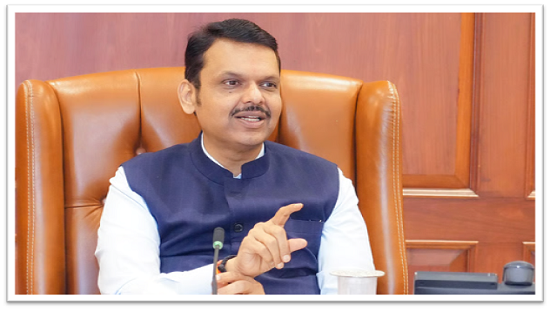
Mumbai to Become a 59-Minute City by 2029: CM Fadnavis Outlines Transport Integration and Navi Mumbai Development
Maharashtra Chief Minister Devendra Fadnavis has set an ambitious target: by 2029, all of Mumbai’s transport infrastructure will be fully integrated, enabling citizens to travel across the city in just 59 minutes. Speaking at a real estate conclave, Fadnavis emphasized that coordinated efforts through a dedicated “war room” have enabled multiple agencies to work in unison, speeding up key infrastructure projects. The CM highlighted that the construction of strategic projects like the Atal Setu and the Navi Mumbai International Airport will serve as catalysts for urban development, with particular focus on Navi Mumbai, which is being envisioned as the “third Mumbai.”
Navi Mumbai: The Next Growth Hub
Fadnavis called upon developers to focus on Navi Mumbai’s potential, noting that the city is poised to host 60 percent of the state’s data centers. A flagship Edutech City is also underway, designed to attract top global universities. Only 12 of the world’s top 50 universities will be permitted to operate here, and the city is expected to accommodate nearly one lakh students. This strategic emphasis on knowledge infrastructure aims to position Navi Mumbai as a hub for education, research, and technology.
Vertical Growth as the Solution for Mumbai
Addressing the perennial concern of limited urban space, Fadnavis reiterated that vertical construction is the only feasible solution for Mumbai’s growing population. Modern technology has addressed fire safety and structural integrity concerns associated with high-rises, ensuring that vertical expansion is both safe and sustainable.
The CM also noted that most illegal constructions are legacy issues, particularly in Thane, Mira-Bhayandar, and Vasai-Virar. To tackle these, the government is implementing a geo-spatial monitoring tool across all municipal corporations. Satellite-integrated building plans will allow authorities to identify unauthorized constructions in real-time, ensuring stricter compliance and long-term urban planning efficiency.
Roads, Metro, and Coastal Connectivity
Traffic congestion in Mumbai, Fadnavis explained, stems from a backlog spanning over six decades. The state government has initiated several infrastructure projects to decongest the city. The coastal road, which will run parallel to the Western Express Highway up to Vadhavan Port, is underway, while the Virar-Alibaug road will form a circular road around Mumbai when completed. Additional parallel roads along the Western Express Highway at Goregaon and the Worli-Sewri connector are also being developed to improve connectivity.
Integration of all metro lines across the city is a key component of Fadnavis’s vision. Once completed, the unified network will enable citizens to traverse Mumbai in under an hour, greatly improving commuter experience. Metro Line III, which has already been commissioned, recorded nearly two lakh passengers in a single day, demonstrating the immediate impact of such infrastructure on daily travel.
Addressing Activism and Project Delays
Fadnavis was critical of certain activist interventions that have delayed infrastructure projects, categorizing them as harmful to Maharashtra’s economic and environmental progress. He cited the five-year delay in the Metro III car shed project despite Supreme Court acknowledgment that carbon sequestration lost from tree cutting would be offset within 80 days. Similarly, concerns about flamingos affecting the Mumbai Trans-Harbour Link were mitigated after studies by the Bombay Natural History Society, with migratory bird populations reportedly increasing. Fadnavis described those using activism to obstruct projects for personal gain as “urban naxals” and emphasized that legal and scientific processes should guide infrastructure development, not obstructionism.
Sustainable Urban Planning and Environmental Considerations
Fadnavis reassured that environmental concerns are being addressed responsibly. Navi Mumbai’s lakes will remain open, with temporary measures applied to ensure flamingos can move to their original sites without affecting urban development. The focus is on integrating ecological preservation with urban expansion rather than halting development. This approach signals a new era of sustainable urban planning where infrastructure growth, environmental safeguards, and technological solutions coexist.
Transforming Mumbai into a Smart Metropolis
The overarching goal of CM Fadnavis’s plan is to transform Mumbai into a seamlessly connected, efficient, and globally competitive city. Through the integration of metro networks, coastal and circular roads, vertical development, and data-driven monitoring of constructions, the city is expected to overcome long-standing urban challenges. With the projected completion of these initiatives by 2029, commuters will experience drastically reduced travel times, improved connectivity, and enhanced quality of urban life.
Fadnavis’s vision for Navi Mumbai as an educational and technological hub, coupled with real-time monitoring of construction and traffic management, underscores a forward-looking governance model. By balancing infrastructure expansion with environmental and safety considerations, the state government aims to create a metropolitan region that is both efficient and resilient. The “59-minute city” is not merely an aspirational slogan but a roadmap for a modern, sustainable, and inclusive Mumbai.




